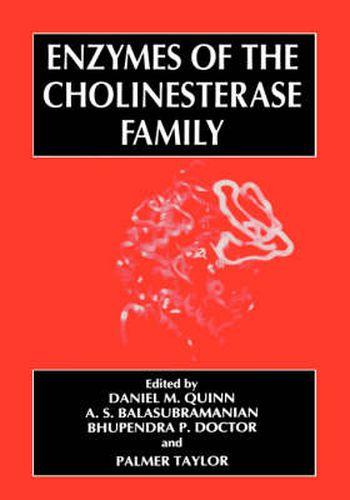Readings Newsletter
Become a Readings Member to make your shopping experience even easier.
Sign in or sign up for free!
You’re not far away from qualifying for FREE standard shipping within Australia
You’ve qualified for FREE standard shipping within Australia
The cart is loading…






This title is printed to order. This book may have been self-published. If so, we cannot guarantee the quality of the content. In the main most books will have gone through the editing process however some may not. We therefore suggest that you be aware of this before ordering this book. If in doubt check either the author or publisher’s details as we are unable to accept any returns unless they are faulty. Please contact us if you have any questions.
The Fifth International Meeting on Cholinesterases convened in Madras, India, in September of 1994. The long and rich history and culture of India provided an excellent setting for the meeting. More than 120 delegates from Asia, Australia, Europe and North America heard 54 oral presentations and viewed 54 posters on current research on enzymes of the cholinesterase family. The aim of this book is to compile the presentations of the Fifth International Meeting on Cholinesterases into a volume that describes recent investigations on the structure and catalytic function of acetylcholinesterase (AChE), butyrylcholinesterase (BuChE) and related enzymes, as well as studies on the molecular and cellular biology of these enzymes and the genes which encode them. Cholinesterases enjoy a long and storied history in diverse areas. In basic biochemical research, AChE is one of the best studied, though yet enigmatic, of enzymes. The efficient catalytic function of this enzyme presents the biochemist with a fundamental challenge in understanding the relationship between structure and function. AChE and BuChE belong to a family of proteins, the alB hydrolase fold family, whose constituents evolutionarily diverged from a common ancestor. Proteins in this family have a wide range of physiological functions. In commerce, AChE is a prime target for agricultural insect control, and for the development of therapeutic agents for Alzheimer’s disease.
$9.00 standard shipping within Australia
FREE standard shipping within Australia for orders over $100.00
Express & International shipping calculated at checkout
This title is printed to order. This book may have been self-published. If so, we cannot guarantee the quality of the content. In the main most books will have gone through the editing process however some may not. We therefore suggest that you be aware of this before ordering this book. If in doubt check either the author or publisher’s details as we are unable to accept any returns unless they are faulty. Please contact us if you have any questions.
The Fifth International Meeting on Cholinesterases convened in Madras, India, in September of 1994. The long and rich history and culture of India provided an excellent setting for the meeting. More than 120 delegates from Asia, Australia, Europe and North America heard 54 oral presentations and viewed 54 posters on current research on enzymes of the cholinesterase family. The aim of this book is to compile the presentations of the Fifth International Meeting on Cholinesterases into a volume that describes recent investigations on the structure and catalytic function of acetylcholinesterase (AChE), butyrylcholinesterase (BuChE) and related enzymes, as well as studies on the molecular and cellular biology of these enzymes and the genes which encode them. Cholinesterases enjoy a long and storied history in diverse areas. In basic biochemical research, AChE is one of the best studied, though yet enigmatic, of enzymes. The efficient catalytic function of this enzyme presents the biochemist with a fundamental challenge in understanding the relationship between structure and function. AChE and BuChE belong to a family of proteins, the alB hydrolase fold family, whose constituents evolutionarily diverged from a common ancestor. Proteins in this family have a wide range of physiological functions. In commerce, AChE is a prime target for agricultural insect control, and for the development of therapeutic agents for Alzheimer’s disease.